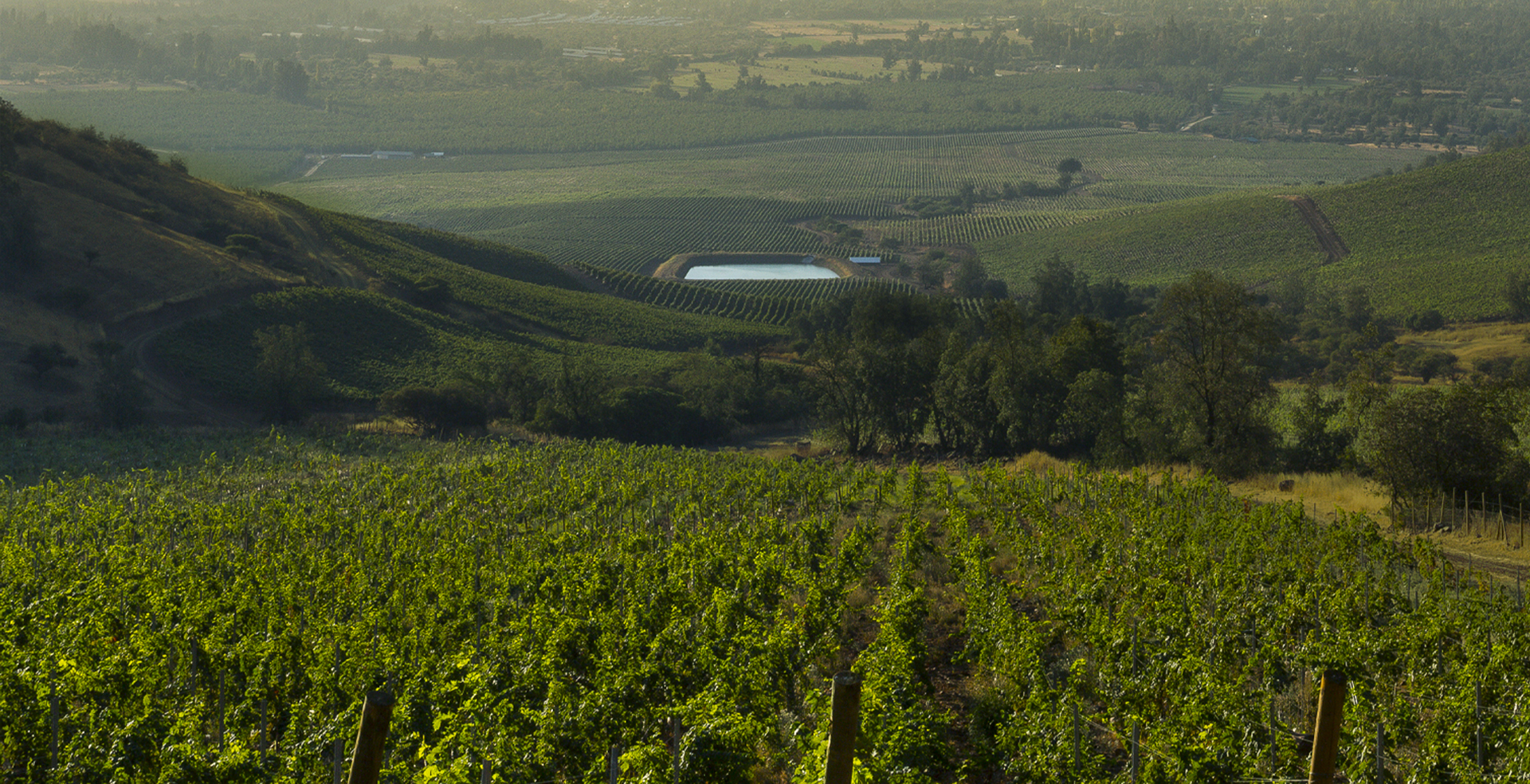Cerro Blanco Estate, 112 hectares.
The name Cerro Blanco is due thanks to the calcium carbonate, or limestone, present in the waters of the Maipo River, and whose waters irrigate the vineyards of the zone.
Cerro Blanco is a mountainous vineyard located at 1,000 meters a.s.l. This makes it one of the highest vineyards in the valley, and because of this altitude, it has a large diurnal temperature range.
Its location on the slopes of the Andes Mountains means its soils are colluvial in origin and have medium to low fertility.
These characteristics make the vineyard exceptional for the cultivation of red grapes, and it’s home to Santa Ema’s icon, ultra-premium, and premium wines. The must obtained from the grapes grown here have great concentration of color, are very expressive, with good body, acidity, and aromas.
The quality of the wines from Cerro Blanco is one of the most consistent in all of the Chilean winemaking industry.



Cerro Blanco’s soils have a large quantity of calcium carbonate which influences the ripening of the grapes, as it stabilizes the cellular membrane that allows the fruit to remain on the vine for a longer period of time. It makes it possible to achieve a greater concentration of tannins, anthocyanins, and polyphenols, as well as other components. They all play an important role in the final quality of a red wine.
Cerro Blanco’s special characteristic, together with the large diurnal temperatures of up to 25ºC in the temperate Mediterranean climate ,make this a unique and special terroir to produce world-class wines with complexity, big body, and consistency.
From this vineyard we produce Cabernet Sauvignon, Cabernet Franc, Carmenere, Carignan, Malbec, Merlot, Syrah, and Marselanne. Some of these grapes are present in the icon wines Rivalta and Catalina, and the Premium Amplus line of wines.

1- Soil is colluvial in origin with elevated levels of organic material derived from vegetables and animals in a process of decomposition, favoring the fertility of the soil thanks to the capacity for retaining the minerals.
2- Profile with high percentage of clays (40%) which facilitates the retention of water suitable for the high atmospheric demand of the terroir. Balanced by the elevated levels of subangular stones that oxygenate the profile, producing wines well-balanced between the acidity and the alcohol.
3- Soils with a presence of rocks in process of weathering, generating preferable conduits for deep root exploration, and giving the vine the capacity to regulate itself. There is an influence from the limestones of calcareous origin that are fundamental for aging wines.